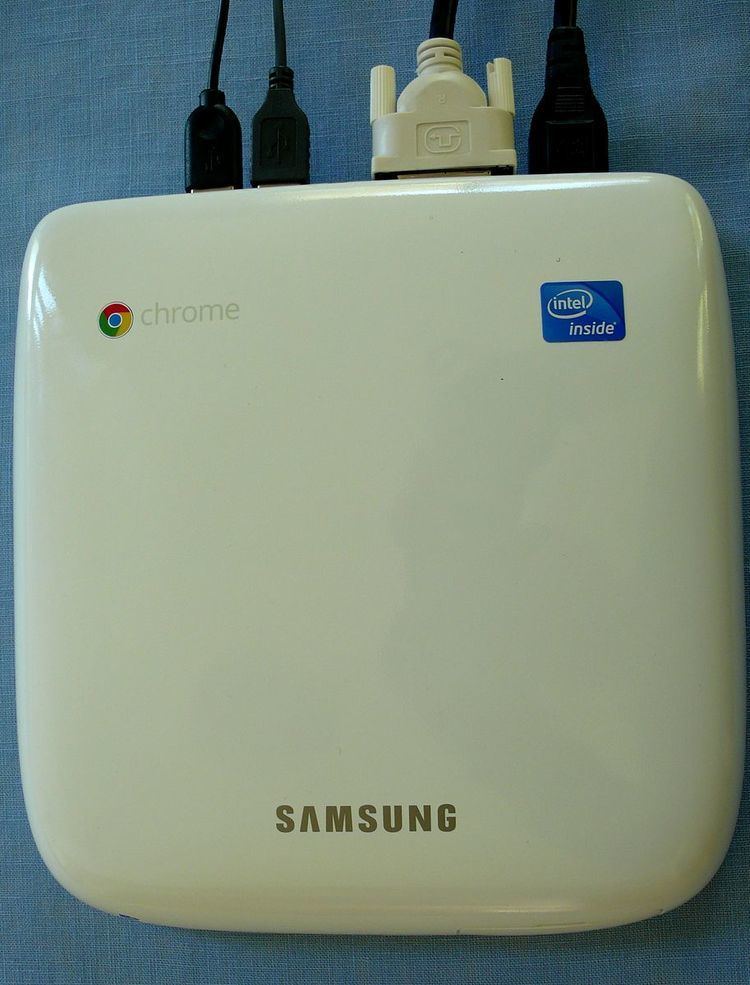Introduced 29 May 2012 Memory 2, 4, or 8 GB | Cost $179-$999 | |
 | ||
Ports USB 2.0/3.0, Ethernet, HDMI, DisplayPort++ | ||
A Chromebox is a personal computer running Google's Chrome OS operating system. The device is a desktop variant of the Chromebook laptop.
Functionality
Chromeboxes, like other Chrome OS devices, primarily support web applications, thereby relying heavily on an Internet connection for software functionality and data storage. That connection, via a local area network, can be wireless or through an Ethernet port.
The machines are classed as small form-factor PCs and typically feature a power switch and a set of connections to support a keyboard, pointing device and one or more monitors. Solid state drives are used for storage, and only wireless printers are supported. The first Chromebox, released by Samsung on May 29, 2012, ran a dual-core Intel Celeron Processor 867 at 1.3 GHz, and featured six USB 2.0 ports and two DisplayPort++ slots compatible with HDMI, DVI, and VGA.
In February 2014, Google bundled an Asus Chromebox with a business video conferencing package, 1080p high definition camera module, external microphone/speaker and remote control. The system retailed for $999 plus a $250 annual management fee, waived the first year—a cost thousands of dollars less than other unified videoconferencing systems, including those from Cisco and Polycom. The Chromebox system employed a Google Hangouts-like interface for up to 15 participants, a dedicated URL for sharing screens, and management accounts for scheduling meetings.
In March 2014, Asus established a new price at the low-end of the Chromebox market with a compact, 1.32 pound model that retailed at $179 and featured a Celeron CPU and four USB 3.0 ports. Yahoo Tech columnist David Pogue called the Asus device among the smallest, "least-expensive desktop computers ever sold", likening it to a Smart car. "You won’t be hauling lumber from Home Depot in it, but it’s a terrific deal—and most days, it’ll get you where you want to go." In May, Asus released a faster model with an Intel Core i3 processor. Hewlett-Packard entered the market in June with a Chromebox powered by an Intel Celeron processor, optionally bundling a keyboard and mouse. In August, Acer introduced two models that could stand vertically and provided some business-oriented features, including encryption and fast deletion of local data. In September, Dell entered the market with an entry-level machine, as well as Dell's implementation of the Google video conferencing system.
In August 2015, AOPen announced a family of Chromeboxes designed principally for driving the content of digital commercial signage. The models are ruggedized for on-site operation.
